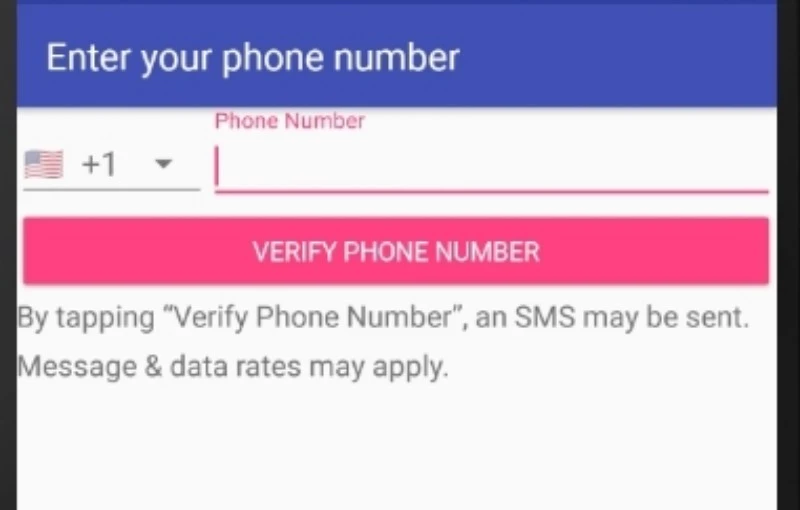Did you also come across a “message and data rates may apply” disclaimer? Perhaps a Dominos coupon that requires a text message with the coupon code? Or a text from a company asking you to reach out to them?
These disclaimers are everywhere, and we are here today to help you out with understanding what they are, and how to understand if they are of any use to us.
What does “message and data rates may apply” mean
The term “message and data rates may apply” is a way for the companies to reach out to their users to make them aware as well as take their consent that they might incur charges for texting the said company if their plan allows for it and thus the company would not be liable for any charges.
“Message and data rates apply”, is one of the most common and oldest-used phrases in history since the inventions of text messages, mobiles, and related technology.
We have seen it, wondered about it, tested it, and probably even forgot about it for most of our lives. Most of the time this pop-up or dialogue is a sentence to us similar to the ‘Terms and conditions apply’.
But there have been times in life, surely, when you have asked what it means. On more than one occasion, perhaps even now you are in need to know what “Message and data rates may apply” actually means and whether it is a good, a bad, or a neutral thing for you.
“Message and data rates may apply” is a term used by various businesses, companies, and technological services to indicate that if needed, you might be charged for the services of texting even though it is related to the company itself.
This indicates that you should be cautious about using your text message features even when reaching out to the company that suggested the approach, in case of deduction of any sort of charges for texting an SMS or MMS.
Now if you think about it, message rates applying to your text make sense, but why data rates? MMS, or Multimedia Messaging System is an advanced form of SMS, or text messages which can be used to send media files and other data to the users.
If that is the case, then data charges would be incurred equal to the data size of the file that has been sent.
How to know if message and data rates apply
Now that we talked about what the whole “message and data rates may apply” dialogue means, it is time to understand if it is of any use to us.
These notifications are everywhere, from food packets with redeemable coupons and offer to business emails encouraging customers to reach out to them for any queries. It becomes necessary to understand if there are going to be any charges incurred for this and if so then how much.
The actual rates for messages and data are, in the present times’ none, or so to say, as most carriers in the US and Canada have long switched to unlimited plans or postpaid plans which allow users to pay for unlimited calls and text beforehand or at the end of the month.
If you are using a limited plan then you would have to check your plan and cellular service for the text and data rates. T mobile, for example, charges 50 cents per text sent, and the incoming ones are free of cost. Verizon on the other hand, charges 20 cents to send a text, and again, free of cost incoming texts.
However, if you are sending a text in roaming (international) zones, it would charge 25 cents a text, and receiving one internationally is 20 cents. So international texts are certainly not free, considering they have to extend their partnership to overseas companies for the reception.
The data rates are based on the size of the file that is uploaded in the MMS. If you have sent a picture of 2 MB in size, your data charge would be 2 MB unless you are connected to a Wi-Fi network for the uploading session.
Message and data rates may apply disclaimer
Back when mobiles and sim cards were new technology, they were expensive. Cellular networks had to charge a good amount of money to provide these services, calls, text messages, and such. WhatsApp, Telegram, and other such messaging apps were out of existence back then.
Slowly, however, the cellular companies got better plans and started switching to either unlimited calls and texting or postpaid plans, which enabled users to pay at a later time. Several toll-free numbers were also available, which meant for some numbers you could be charged, for some you would not be.
This became even more important to clarify when the unlimited plans were introduced, so companies started putting this disclaimer in their messages and emails to make sure that they cannot be sued for not telling the customers that there are possible charges for texting, if they have a regular plan, that is.
Over time the unlimited plans kept growing stronger, but the companies have kept it in habit to keep the users aware that any sort of text message from their side would be liable to charges based on their plans and their service provider, which also double downs as a form of user consent.
This would keep them free from getting into issues regarding misinformation, or failure to inform about charges incurred. So now you can guess why the “message and data rates may apply” disclaimer is so popular with every service, email, and message since cellular connections have developed.
Final words:
This article discussed the “message and data rates may apply” disclaimer, what it is, how it may affect the users, and if there are any message and data charges that are incurred if the user decides to use the text services to text the company.
On the other hand, if you have already texted someone and worried if the message would be delivered or not because their phone is switched off, we have got you covered! We hope you liked the article and keep tuned with AndroidNature for more!

For someone who is a Medical School student, you certainly did not expect me to be here. But here I am, due to my fondness for technology, games and science. There is just something really sweet about technology that has helped in binding us together, so it is not surprising that I love to talk about it. And with the same technology, you could connect with me easily, so feel free to!










